How to Train Clients With Type 2 Diabetes (Step-by-Step Guide)
Knowing how to train clients with type 2 diabetes can significantly enhance your client base as a personal trainer. However, it’s crucial to have the appropriate tools and knowledge to effectively train diabetic clients. Specific features of personal training software can assist in achieving this goal. Learn how to train clients with diabetes and the necessary tools in this detailed guide.
- Training clients with type 2 diabetes requires a comprehensive approach that includes both aerobic and resistance training to help manage blood glucose levels and overall health.
- Most clients with type 2 diabetes will need a regular exercise routine that helps control weight, improve insulin sensitivity, and manage cardiovascular health.
- The use of workout and assessment software can help safeguard your client’s safety while assisting them in reaching their fitness goals with fewer setbacks.
Venturing into training special populations, like clients with type 2 diabetes, can provide personal trainers a rewarding way to expand their business.
To effectively train clients with type 2 diabetes, you need not only an understanding of the condition but also the necessary tools to deliver effective training; that’s where personal training software steps in. By leveraging the features offered by the best online software for personal trainer businesses, you can train clients with type 2 diabetes in a way that improves their health and manages their condition.

Book a demo now with Exercise.com to get the best personal training software!
Understanding Type 2 Diabetes and its Impact on Fitness Training
Living with type 2 diabetes requires individuals to make certain adjustments to their lifestyle and daily routines. When it comes to exercise and fitness training, there are specific considerations that need to be taken into account to ensure the safety and effectiveness of the program. In this article, we will explore each aspect of training clients with type 2 diabetes, providing valuable insights and strategies for fitness professionals to successfully work with this population.
Type 2 diabetes is a chronic condition characterized by high blood sugar levels resulting from the body’s inability to properly utilize insulin. This can lead to various health complications, including cardiovascular disease, nerve damage, and kidney problems. When it comes to fitness training, understanding the impact of type 2 diabetes is crucial for designing appropriate exercise programs.
Individuals with type 2 diabetes often experience decreased insulin sensitivity and impaired glucose regulation. This means that during exercise, they may have difficulty controlling their blood sugar levels. It is essential to educate clients about the potential risks of hypoglycemia (low blood sugar) and hyperglycemia (high blood sugar) during workouts and equip them with the tools to manage their condition effectively.
In addition to managing blood sugar levels, individuals with type 2 diabetes may also face challenges related to cardiovascular health during fitness training. Cardiovascular exercise, such as running or cycling, can be beneficial for improving heart health. However, individuals with type 2 diabetes may have an increased risk of cardiovascular complications, such as heart disease or high blood pressure.
Therefore, it is important to incorporate appropriate cardiovascular exercises into their fitness programs while considering their individual health status. Regular monitoring of blood pressure and heart rate during workouts can help ensure their safety and optimize the benefits of exercise for their cardiovascular health.
The Importance of Exercise for Type 2 Diabetes Management
Regular physical activity plays a vital role in managing type 2 diabetes. Exercise helps improve insulin sensitivity, promotes weight management, lowers blood sugar levels, and reduces the risk of cardiovascular complications. As fitness professionals, it is crucial to emphasize the importance of exercise to clients with type 2 diabetes and encourage them to incorporate physical activity into their daily routine.
Engaging in both cardiovascular exercises and strength training is beneficial for individuals with type 2 diabetes. Cardiovascular exercises, such as walking, cycling, or swimming, help improve heart health, increase stamina, and assist in maintaining a healthy body weight. On the other hand, strength training exercises, such as lifting weights or resistance training, help build muscle mass, improve bone density, and enhance overall physical strength. A well-rounded exercise program should incorporate both types of workouts.
In addition to cardiovascular exercises and strength training, flexibility exercises are also important for individuals with type 2 diabetes. Flexibility exercises, such as stretching or yoga, help improve joint mobility, reduce the risk of injury, and enhance overall flexibility. These exercises can also help alleviate muscle tension and promote relaxation, which can be beneficial for managing stress levels.
Assessing Client’s Health and Fitness Levels for Training
Before starting any exercise program, it is crucial to assess a client’s health and fitness levels. This is especially important for individuals with type 2 diabetes, as their condition may require additional considerations. Conducting a thorough health screening, including medical history, physical examination, and risk factor assessment, will help identify any potential barriers or contraindications to exercise.
Additionally, assessing the client’s current fitness level is essential for designing a personalized and appropriate exercise program. Evaluating aerobic capacity, muscular strength and endurance, flexibility, and balance will provide insights into the client’s starting point and guide the progression of the training program.
Furthermore, it is important to consider the client’s goals and preferences when assessing their health and fitness levels. Understanding what the client wants to achieve through exercise and their preferred activities can help tailor the program to their specific needs and increase adherence.
Designing a Safe and Effective Exercise Program for Clients with Type 2 Diabetes
Designing an exercise program for clients with type 2 diabetes requires careful planning and consideration. It is essential to set realistic goals and tailor the program to the individual’s capabilities and preferences. The program should aim to improve overall fitness, manage blood sugar levels, and reduce the risk of complications.
When designing the exercise program, it is crucial to include a variety of exercises that target different muscle groups and provide a balanced cardiovascular workout. Incorporating both aerobic exercises and strength training is beneficial for individuals with type 2 diabetes. Aerobic exercises should be performed for at least 150 minutes per week, spread over several days, while strength training exercises should be performed two to three times per week, targeting major muscle groups.
It is important to progressively increase the intensity and duration of the exercises over time, but always in a controlled and gradual manner. Gradual progression allows the body to adapt to the demands of exercise while minimizing the risk of injuries or exacerbating the client’s medical condition. Additionally, incorporating proper warm-up and cool-down strategies, as well as flexibility exercises, is essential to prevent injuries and improve overall flexibility.
Another important aspect to consider when designing an exercise program for clients with type 2 diabetes is monitoring blood sugar levels before, during, and after exercise. It is recommended to check blood sugar levels before starting the workout to ensure they are within a safe range. During exercise, individuals should be aware of any symptoms of low blood sugar, such as dizziness or confusion, and have a source of fast-acting carbohydrates on hand in case of a hypoglycemic episode. After exercise, it is important to monitor blood sugar levels again to ensure they have not dropped too low.
In addition to regular exercise, it is also crucial to emphasize the importance of a healthy diet in managing type 2 diabetes. Encouraging clients to follow a balanced meal plan that includes a variety of nutrient-rich foods can help control blood sugar levels and support overall health. Providing education on portion control, carbohydrate counting, and the glycemic index can empower clients to make informed food choices and better manage their condition.
Incorporating Cardiovascular Exercises into Training Sessions
Cardiovascular exercises are a cornerstone of any exercise program for individuals with type 2 diabetes. These exercises help improve heart health, increase stamina, and promote weight management. When it comes to incorporating cardiovascular exercises into training sessions, there are several options to consider.
Aerobic exercises such as walking, jogging, cycling, swimming, or using cardio machines like treadmills or ellipticals are all excellent choices. These exercises can be adjusted to the client’s fitness level and gradually increased in intensity over time. It is important to monitor the client’s heart rate and perceived exertion during the exercises to ensure they are working within their target heart rate zone and not exerting themselves beyond their capabilities.
Additionally, incorporating interval training into cardiovascular exercises can be highly beneficial. Interval training involves alternating between periods of high-intensity exercise and periods of rest or lower intensity. This type of training has been shown to improve cardiovascular fitness, increase calorie burn, and enhance insulin sensitivity in individuals with type 2 diabetes. Examples of interval training include sprinting for 30 seconds followed by a 1-minute recovery jog, or cycling at a high resistance for 1 minute followed by 2 minutes of lower resistance pedaling.
Strength Training Techniques for Clients with Type 2 Diabetes
Strength training is another crucial component of an exercise program for individuals with type 2 diabetes. This type of exercise helps build muscle mass, improve bone density, and increase overall physical strength. When incorporating strength training into training sessions, it is important to focus on proper technique and form to ensure safety and effectiveness.
Utilizing compound exercises that target multiple muscle groups, such as squats, lunges, push-ups, and rows, is an efficient approach. Incorporating both free weights and resistance machines can provide variety and cater to the client’s preferences and abilities. Starting with lighter weights and gradually progressing over time is essential to prevent injuries and allow adaptation.
Including exercises that target major muscle groups, such as the legs, back, chest, shoulders, arms, and core, will ensure a balanced and comprehensive strength training program. It is crucial to emphasize proper breathing techniques and to encourage clients to listen to their bodies and adjust the resistance and intensity as needed.
Another important consideration when designing a strength training program for clients with type 2 diabetes is the frequency of training sessions. It is recommended to aim for at least two to three sessions per week, with a day of rest in between to allow for muscle recovery. This frequency helps to maintain muscle mass and improve insulin sensitivity, which is beneficial for managing blood sugar levels.
In addition to strength training, it is also important to incorporate cardiovascular exercise into the overall exercise program. Cardiovascular exercise, such as brisk walking, cycling, or swimming, helps to improve cardiovascular health, burn calories, and enhance overall fitness. Combining strength training with cardiovascular exercise can provide a well-rounded approach to managing type 2 diabetes and promoting overall health and well-being.
Balancing Blood Sugar Levels during Workouts
One of the main concerns when training clients with type 2 diabetes is maintaining balanced blood sugar levels during workouts. Fluctuations in blood sugar can have adverse effects on the client’s overall well-being and performance. Therefore, it is important to educate clients about strategies to balance their blood sugar levels during exercise.
Encouraging clients to monitor their blood sugar levels before, during, and after exercise is essential. This will help them understand how their body responds to different types of exercises and adjust their management strategies accordingly. Additionally, advising clients to consume a balanced snack or meal containing carbohydrates and protein before exercise can help stabilize blood sugar levels and provide the necessary energy for the workout.
It is important to remind clients to stay hydrated throughout their workouts, as dehydration can affect blood sugar control. Providing access to water and encouraging regular hydration breaks are crucial. Finally, having fast-acting carbohydrates, such as glucose tablets or sports drinks, readily available in case of hypoglycemia during exercise is important to ensure immediate treatment if necessary.
Precautions and Modifications for Exercise with Type 2 Diabetes
While exercise is generally safe and recommended for individuals with type 2 diabetes, there are some precautions and modifications that may need to be considered. Understanding these measures will help fitness professionals create a safe and effective exercise environment for their clients.
It is essential to be aware of any existing complications or medical conditions that may impact the client’s ability to participate in certain activities. For example, clients with diabetic retinopathy or peripheral neuropathy may need to avoid high-impact exercises or activities that place excessive stress on the feet or eyes. Adaptations, such as selecting lower-impact exercises or adjusting equipment, may be necessary in these cases.
Adjustments may also be needed for clients taking medications that affect blood sugar levels. Certain medications, such as insulin or sulfonylureas, can increase the risk of hypoglycemia during exercise. In such cases, providing guidelines for monitoring blood sugar levels before and after exercise and adjusting medications or meal plans accordingly may be necessary in collaboration with healthcare professionals.
Proper Warm-up and Cool-down Strategies for Diabetic Clients
The warm-up and cool-down phases of a workout are essential for preventing injuries and preparing the body for exercise. For clients with type 2 diabetes, these phases can also help stabilize blood sugar levels and reduce the risk of complications.
During the warm-up, it is important to gradually increase the heart rate and body temperature. Performing light aerobic exercises, such as brisk walking or gentle cycling, for five to ten minutes will help prepare the muscles and joints for the upcoming workout. Additionally, including dynamic stretches that target major muscle groups can help improve flexibility and reduce the risk of injuries.
Similarly, during the cool-down phase, it is important to gradually decrease the intensity of the exercise and allow the heart rate and body temperature to return to normal. Performing gentle aerobic exercises or practicing static stretching exercises can aid in the recovery process and promote relaxation.
How do you train someone with type 2 diabetes?
When training someone with type 2 diabetes, it’s important to focus on a well-rounded exercise program that includes aerobic exercises, strength training, and flexibility exercises. The exercise intensity and duration should be tailored to the individual’s fitness level, health status, and personal goals. Regular monitoring of blood glucose levels before, during, and after exercise is important to ensure safety and make any necessary adjustments.
What is the best method of exercise for people with type 2 diabetes?
The best method of exercise for people with type 2 diabetes is a combination of aerobic exercises and strength training. Aerobic exercises like brisk walking, cycling, swimming, or dancing help improve cardiovascular fitness and insulin sensitivity. Strength training exercises, using weights or resistance bands, help build muscle mass and improve glucose metabolism. Flexibility exercises like yoga or stretching are also beneficial for overall mobility and joint health.
Which type of resistance training program would be best for a client with diabetes?
A resistance training program that focuses on full-body exercises and targets major muscle groups is ideal for a client with diabetes. This can include exercises such as squats, lunges, chest presses, rows, and shoulder presses. It’s important to start with lighter weights and gradually increase intensity and resistance as the client progresses. Working with a qualified fitness professional can ensure proper form, progression, and individualization of the program.
Can a personal trainer train someone with diabetes?
Yes, a personal trainer can train someone with diabetes. However, it’s important for personal trainers to have knowledge and understanding of diabetes, exercise considerations, and safety precautions. Working with a personal trainer who is experienced in training individuals with diabetes can provide proper guidance, motivation, and support throughout the exercise program.
What should be the main exercise goal for someone struggling with type 2 diabetes?
The main exercise goal for someone struggling with type 2 diabetes is to improve insulin sensitivity, manage blood glucose levels, and promote overall cardiovascular health. Regular exercise can help lower blood sugar levels, improve insulin function, and reduce the risk of cardiovascular complications associated with diabetes.
How do you empower someone with diabetes?
Empowering someone with diabetes involves providing education, support, and resources to help them take control of their health. This includes teaching them about the benefits of exercise, helping them set realistic goals, providing guidance on proper exercise techniques and safety, and encouraging them to make healthy lifestyle choices. Regular communication, positive reinforcement, and celebrating their achievements are also important in empowering individuals with diabetes.
What exercises should you avoid with type 2 diabetes?
Individuals with type 2 diabetes should avoid exercises that place excessive stress on joints or have a high risk of injury. This may include activities with a significant impact on the feet and lower limbs, such as high-impact aerobics or running on hard surfaces. It’s important to consult with a healthcare professional or a qualified fitness trainer to determine appropriate exercises and modifications based on individual circumstances.
When should type 2 diabetes exercise?
Individuals with type 2 diabetes can exercise at various times depending on personal preference and other factors. Generally, exercising at consistent times throughout the day can help establish a routine and maintain consistency. Some individuals may find it beneficial to exercise in the morning to kickstart the day and help control blood sugar levels. It’s important to monitor blood glucose levels before, during, and after exercise to ensure safety and make any necessary adjustments.
When should diabetics avoid exercise?
Diabetics should avoid exercise when blood glucose levels are too high or too low. High blood glucose levels (hyperglycemia) can lead to dehydration and an increased risk of complications. Low blood glucose levels (hypoglycemia) can result in dizziness, weakness, confusion, or even loss of consciousness. It’s important to monitor blood glucose levels regularly and seek guidance from a healthcare professional to determine appropriate exercise timing and adjustments in medications or food intake when necessary.
How do you educate a diabetic patient to exercise?
Educating a diabetic patient to exercise involves providing information about the benefits of exercise, safety precautions, and how to incorporate physical activity into their lifestyle. This can include explaining the impact of exercise on blood sugar control, insulin sensitivity, cardiovascular health, and overall well-being. Practical tips on getting started, choosing appropriate activities, monitoring blood glucose levels, and recognizing signs of hypoglycemia or hyperglycemia are also important components of the education process.
What are the best strength training exercises for diabetics?
The best strength training exercises for diabetics include exercises that target major muscle groups and promote overall strength and stability. Some examples include squats, lunges, deadlifts, chest presses, rows, shoulder presses, and core exercises like planks or bridges. It’s important to start with lighter weights or resistance bands and focus on proper form and technique. Gradually increasing intensity and resistance over time will help improve strength and endurance. Working with a qualified fitness professional can provide guidance and ensure a safe and effective strength training program for diabetics.
Is cardio or weight training better for diabetics?
Both cardio and weight training have their own benefits for diabetics. Cardio exercises, such as brisk walking, cycling, or swimming, help improve cardiovascular fitness, burn calories, and improve insulin sensitivity. Weight training, on the other hand, helps build muscle mass, improve glucose metabolism, and increase overall strength and stability. Combining both types of exercise in a well-rounded program can provide the most benefits for individuals with diabetes.
Is it OK for diabetics to lift weights?
Yes, it is generally safe and beneficial for diabetics to lift weights. Strength training exercises help build muscle mass, improve insulin sensitivity, and promote overall metabolic health. However, it’s important to start with lighter weights or resistance bands, focus on proper form and technique, and gradually increase intensity and resistance as tolerated. Working with a qualified fitness professional can ensure proper guidance and safety during weightlifting exercises.
How do you train a diabetic person?
When training a diabetic person, it’s important to take their individual needs, goals, and health status into consideration. Developing a comprehensive exercise program that includes a combination of cardiovascular exercises, strength training, and flexibility exercises is important. The exercise program should be tailored to their fitness level, taking into account any diabetes-related complications or limitations. Regular monitoring of blood glucose levels, hydration, and appropriate modifications as needed are also essential. Collaboration with healthcare professionals, such as diabetes educators or registered dietitians, can provide additional support and guidance in training a diabetic person.
What are three healthy lifestyle choices for a person with type 2 diabetes?
Three healthy lifestyle choices for a person with type 2 diabetes include:
- Eating a Balanced Diet: Opting for a balanced diet that includes a variety of nutrient-dense foods, emphasizing whole grains, lean proteins, fruits, vegetables, and healthy fats while limiting processed foods, sugary beverages, and excessive saturated or trans fats.
- Regular Physical Activity: Engaging in regular physical activity such as aerobic exercises, strength training, and flexibility exercises to improve insulin sensitivity, manage weight, and enhance overall cardiovascular health.
- Monitoring Blood Sugar Levels: Regularly monitoring blood sugar levels, taking medications as prescribed, and working closely with healthcare professionals to manage and maintain optimal blood glucose control.
What exercises should diabetics avoid?
Diabetics should generally avoid exercises that pose a high risk of injury or place excessive stress on the joints or feet. This may include high-impact activities like jumping, running on hard surfaces, or contact sports. It’s important to choose exercises that are appropriate for their fitness level, consider any existing complications, and consult with healthcare professionals or qualified fitness trainers for personalized recommendations.
Use the Best Personal Training Software to Offer a Stellar Client Experience
Training clients with back pain requires a comprehensive and tailored approach. See how Exercise.com can help.

To learn more about how Exercise.com can help you run your fitness business, book a demo now!
Creating Training Plans for Clients with Diabetes
Here’s how you can help your clients accomplish their training goals by using workout plan creator software to create workout plans, run fitness challenges, offer online workout groups, message clients, and more, all from your very own custom branded fitness apps.
Exercise.com stands out as an all-in-one fitness business management software with comprehensive workout plan sales capabilities. The robust member management, billing & invoicing, and unique fitness assessment tools offer a one-stop solution for fitness business needs. Here’s just some of what you can do with the Exercise.com platform:
Engage with clients via automations.
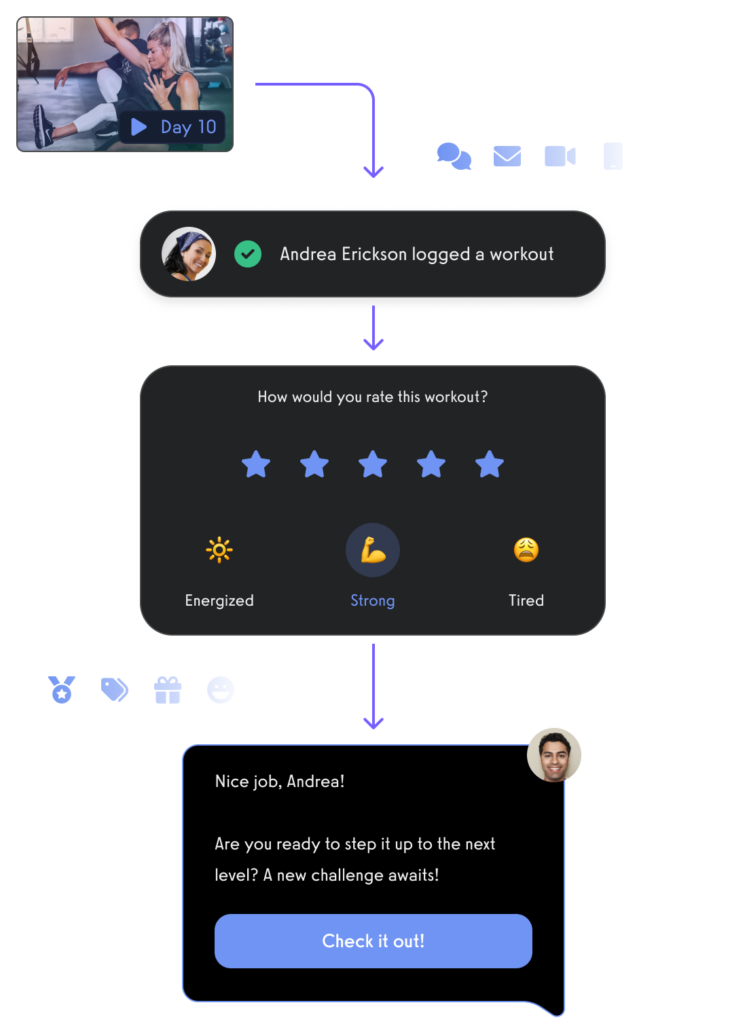
Manage leads with a fitness CRM.

Create and send fitness assessments with ease.
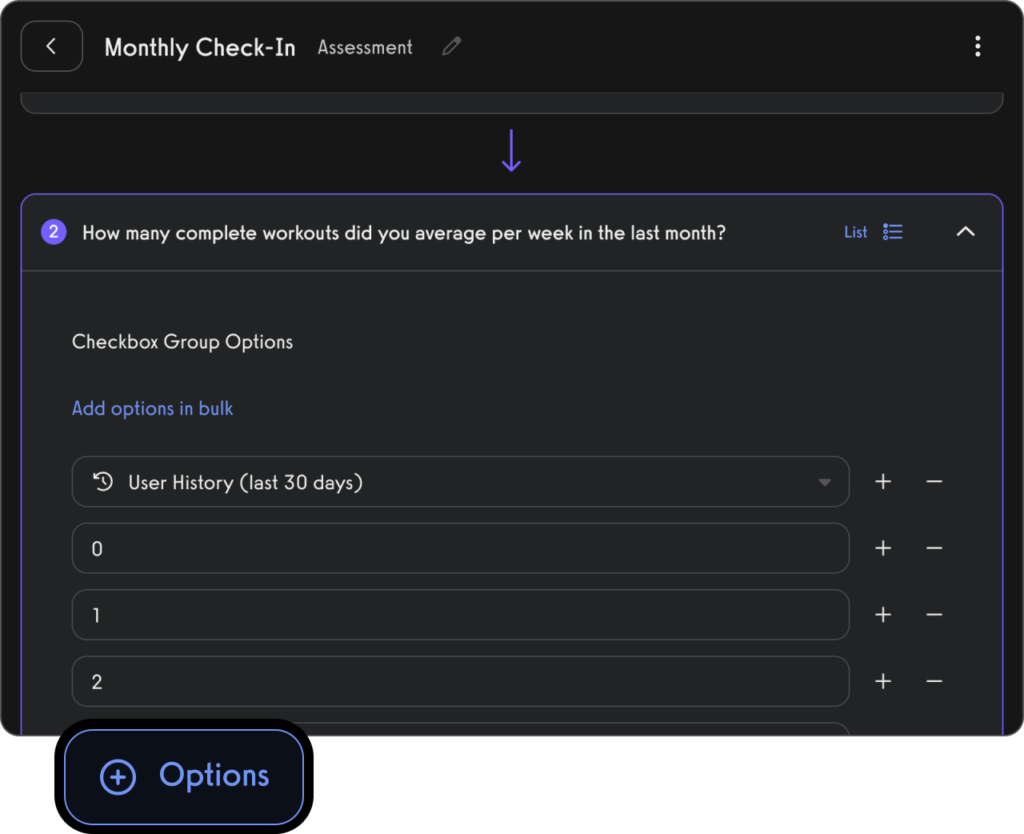
Use fitness habit tracking to inspire and motivate personal training clients (in-person and remote).

Use fitness progress photos to engage with clients.
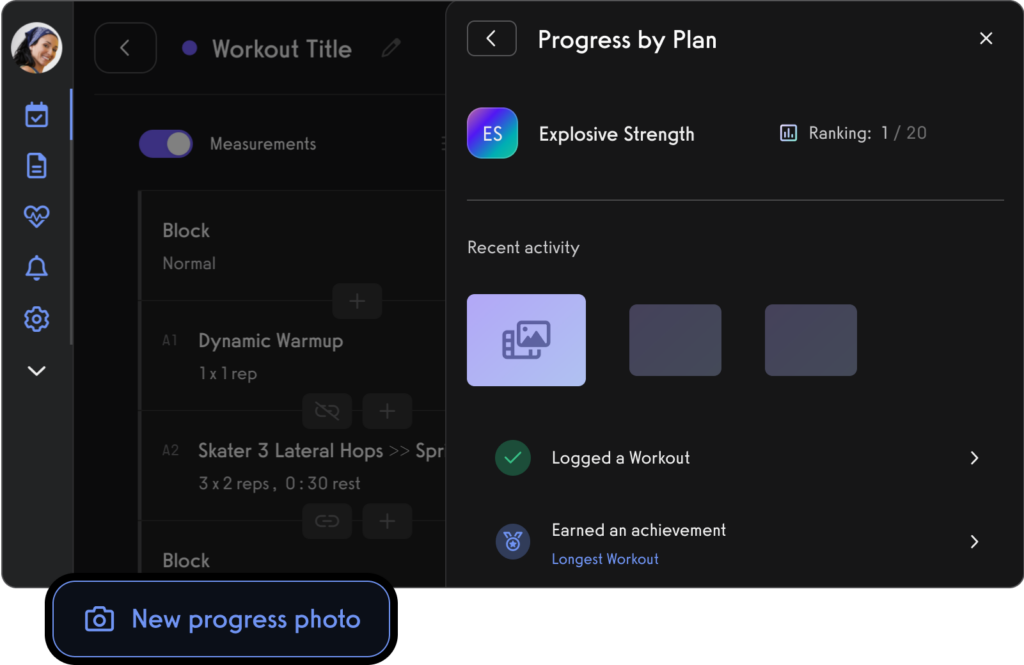
Use fitness leaderboards to track performance and inspire healthy competition.

Use the exercise demonstration video library or create your own custom exercise demonstration videos.

Create workout plans for parents and dependents, teams and more.

Manage personal training clients with ease.

Book appointments for clients (Read More: Best Gym Booking Software)

Create classes and fitness groups

Manage fitness challenges (Read More: 100+ Fitness Challenge Ideas)
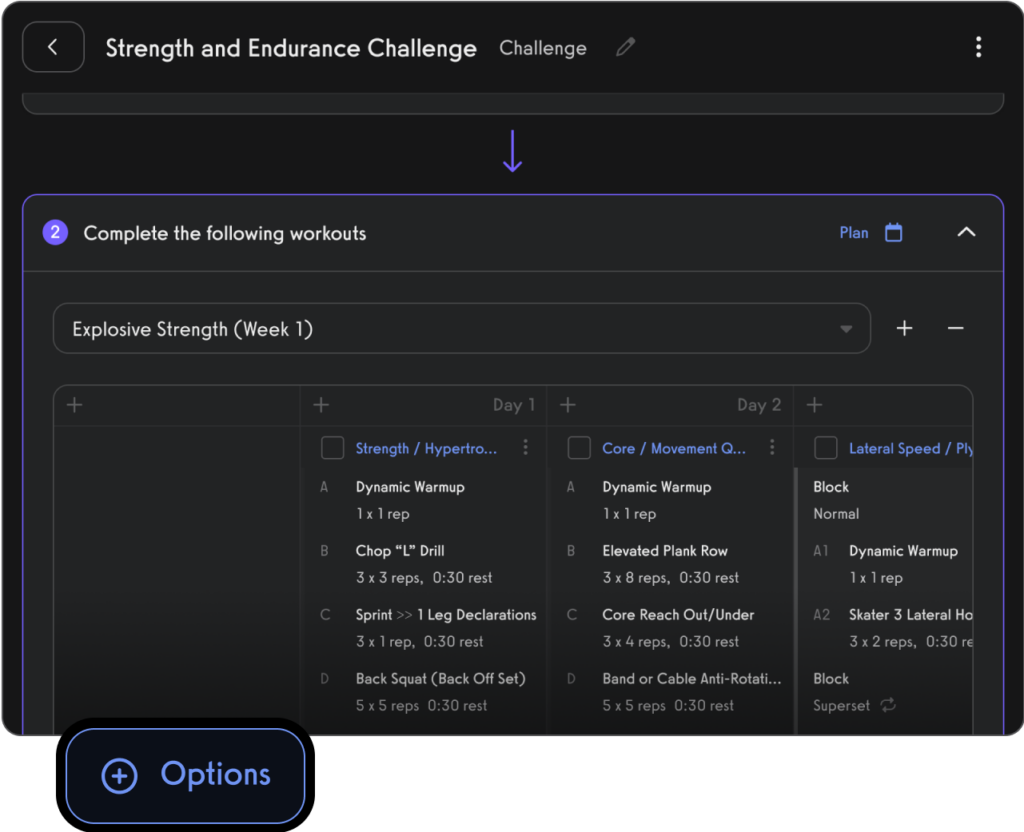
Process payments for open gym, classes, and personal training.

Communicate with gym members, athletes, team members, personal training clients, class members, parents, and dependents via SMS, email, and in-app push notification.
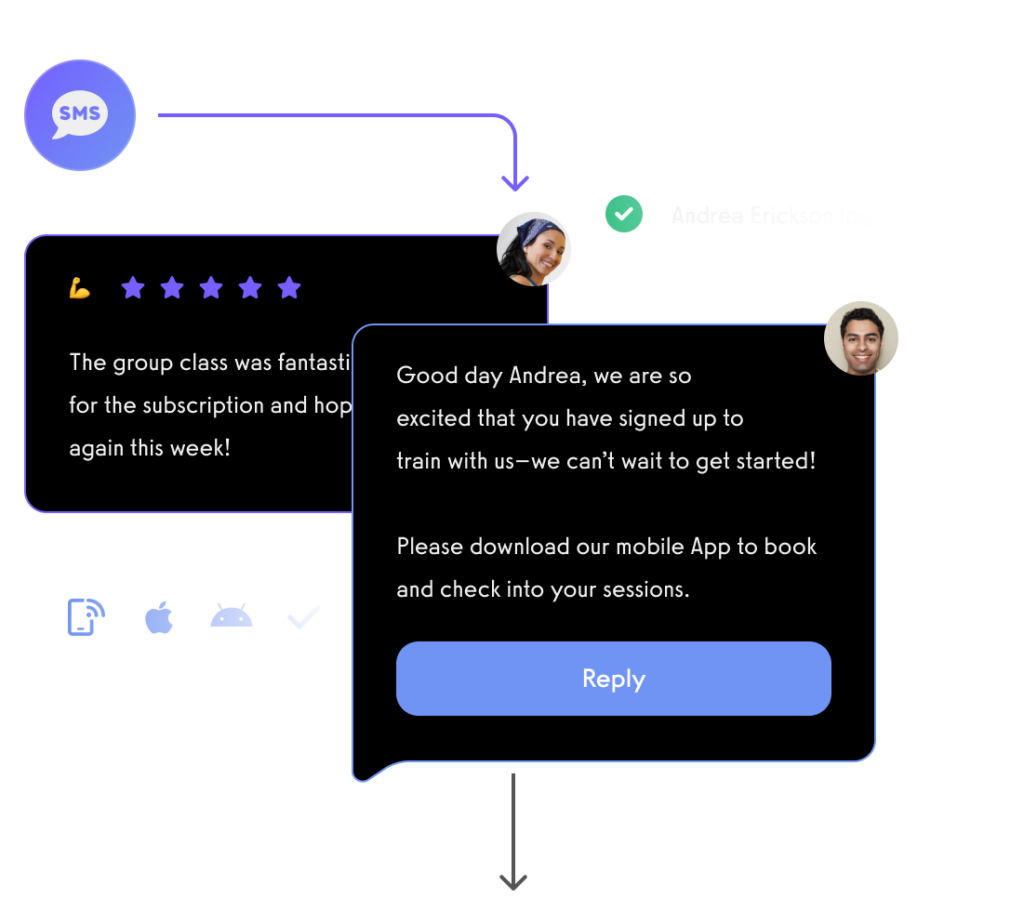
View performance over time, track personal records, and other fitness stats with performance reporting dashboards.
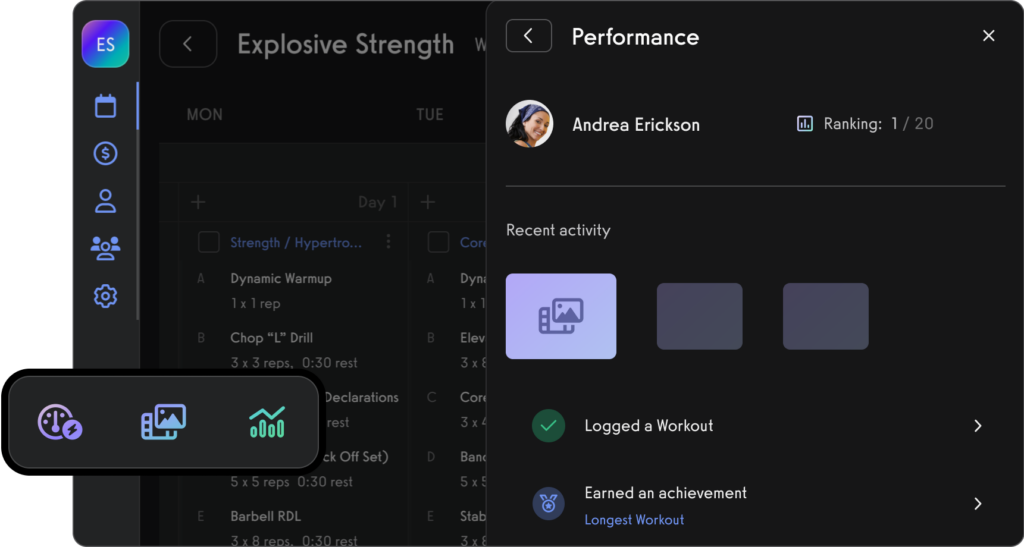
And of course, view all of your fitness business reports easily too.

All from your custom-branded fitness apps (Read More: Best Gym Mobile Fitness Apps Software)

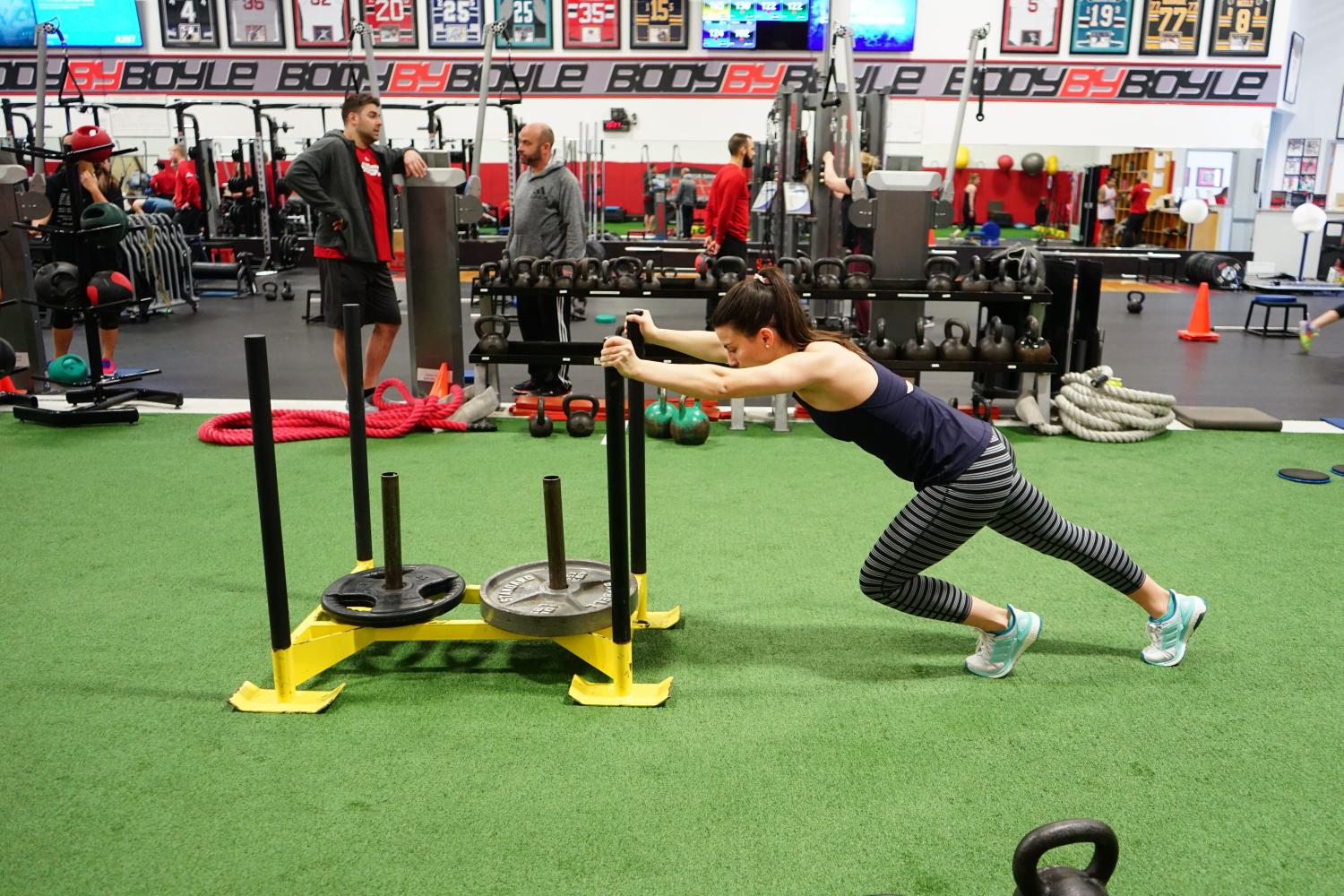
Want to learn how your fitness business can take it to the next level? Get a demo now!









